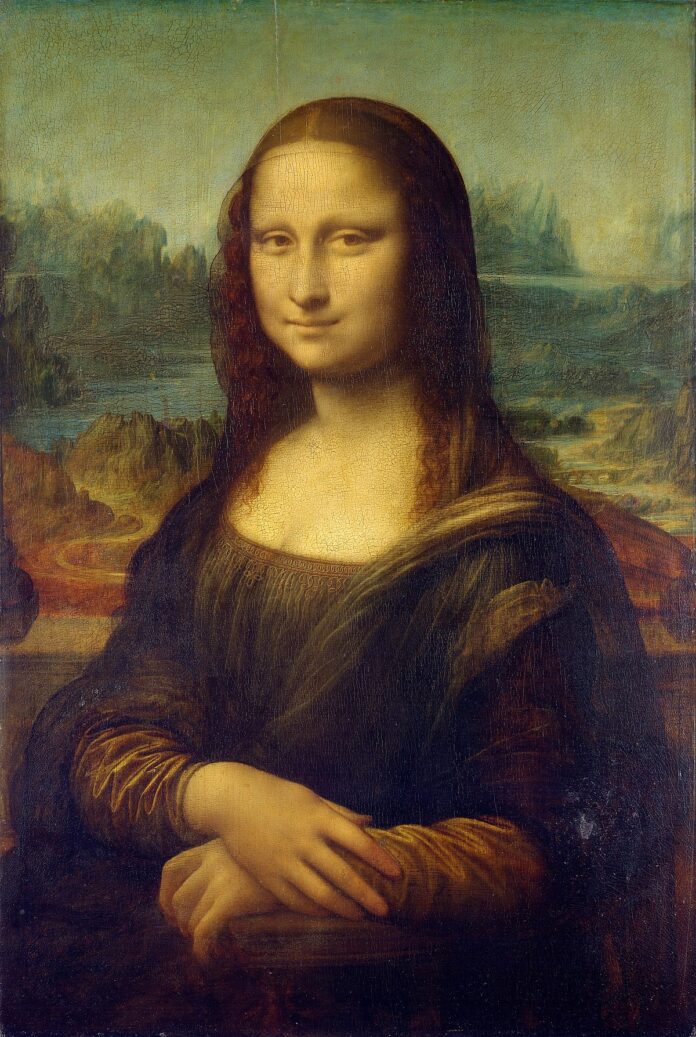Between the years 1503 and 1506 Leonardo da Vinci, the engineer and artist du jour worked on a painting- a portrait he named Mona Lisa. Who knew that hundreds of years later the portrait would be identified as the world’s most famous painting?
Mona Lisa, also known as La Gioconda in Italian and La Joconde in French for ‘the jocund one’ is an oil painting of a lady on a 77 centimeter by 53 centimeter Lombardy poplar wood panel. The lady has an enigmatic smile and is seated relaxedly on an arm chair, facing the viewer at a three-quarter turn point of view. The subject of the portrait had remained unknown for a couple of centuries. As other people speculated her to be Lisa del Giocondo,initially known as Lisa Gherardini, the wife of an Italian nobleman, Fransesco del Giocondo who was a dealer in cloth and silk merchandise, other people thought that she was the mother to Leonardo da Vinci, Caterina. Some even cogitated on the possibility of the subject being Leonardo himself disguised in feminine form due to the similarity of Leonardo’s facial features to the subject’s.
However, Dr.Amin Schlechter, a manuscript expert of the Heidelberg University in Germany in May 2005 confirmed the subject to be Lisa del Giocondo. This was after the discovery of a note dated October 1503 by Leonardo’s coeval Agostino Vespucci stating that Leonardo was doing a portrait of Lisa del Giocondo at that time. He had been asked to do it for The Giocondos’ new home and to mark the birth of their second son, Andrea.
Leonardo continued to work on the portrait of Mona Lisa to as late as 1517 when he suffered a stroke that paralysed his painting career. He therefore sold the unfinished piece of painting to King Francis of France before he succumbed to health complications in 1519 making the painting the property of the French Monarchy. During the historic French Revolution, King Napoleon kept the painting in his bedroom where he constantly kept admiring Lisa del Giocondo, the lady in the portrait. Later on, the painting was moved to the Louvre Museum in Paris where it is to date.
The Mona Lisa portrait was just another beautiful portrait by a popular painter in the Louvre museum up until the 21st of August 1911 when it was stolen. This was the first time Mona Lisa rose to the peak of fame. For two years the space occupied by the portrait remained empty and people paid the void a visit of respect. Picasso and his friend Guillaume Apollinairre were the first two suspects of the robbery as they had earlier bought stolen sculptures of the Louvre museum.
Vincenzo Peruggia was in 1913 found out to be in possession of the painting. He had hidden it in the false bottom of a tree trunk and was discovered when he tried to sell the piece of art work. When questioned, he claimed to have intended to repatriate the portrait to its mother land, Italy. Due to this, the sentence that he was to serve was reduced as he was regarded a hero by Italy. The portrait has been attacked several times- by a rock, acid, tea and even red paint. It is for this reason that the portrait was put behind a bullet proof glass frame.
Nevertheless, this could not be the only thing that makes Mona Lisa the most widely known, most sung of, most written about and most caricatured work of art. It is ascribed to a number of other reasons.
First and foremost is that Leonardo employed a number of drawing techniques while working on the portrait of Mona Lisa, most of which were cumbersome to use or had just been introduced to the art industry. One of these methodologies is the sfumato tactic whereby the painter blends one tone into another over and over again to bring perfect delineation of features of the subject of the painting. By doing this, Leonardo achieved creation of a vivid portrait with very fine details, some of which make it difficult for one to clearly tell the facial expression of Mona Lisa. She seems happy but disgusted and angry at the same time due to application of the sfumato technique at the corners of the eyes and mouth resulting into a mysterious smile. The use of this technique also explains why it took Leonardo so long to complete the portrait. To this date, not many painters have mastered the art of using the sfumato technique.
The sitter and the distant landscape in the portrait seem to have a natural connection. This was achieved by the use of the loggia technique. Employing this tactic helps a painter mediate between the main subject of a portrait and a distant background. Apart from that, Leonardo extensively applied the use of the Fibonacci sequence. This is a mathematical application of irrational numbers that give a never ending sequence producing aesthetically pleasing pieces of art. The mystic beauty of Mona Lisa that is time and again described in poems and songs is attributed to this technique.
The optical illusion given by the portrait is one other reason that makes Mona Lisa a famous portrait. Leonardo attained this by the use of the Silberlick effect. By placing the left eye pupil at a central position of the eye and the right eye pupil slightly to the right eye’s left side , Mona Lisa seems to be following you by her eyes as you move around.
Having been painted during the Italian Renaissance period, the simplicity of Mona Lisa’s appearance is a unique feature. Many paintings of that time portrayed women with accentuated features such as long necks, very tiny waists and slender pointed noses along with heavily bejeweled arms and ears. They were oft dressed in high and tight necked veils. Unlike them, Mona Lisa is dressed in a dull coloured veil with a low neck and a transparent veil on her head. She has no played up features or ornaments on her body.
The fashion in portraiture at the time was straight forward posing. However, Mona Lisa is seated in a way that she faces the viewer at a sideways three quarter turn as if engaging in a conversation with the viewer but from a quite distant position. This ton was copied by painters later on and became the new favorite method of portraiture.
As of 1962, the Mona Lisa portrait had an estimated value of 100 million dollars, an equivalent of almost a billion dollars as at now. Priceless, isn’t it? Being one of Leonardo’s most treasured pieces of art due to the time it took him to complete it and the effort he put in to attain perfection, it is no doubt that he must have sold it at a very high cost, and that he did. He even asked for payment in silver bars.
The Mona Lisa portrait accounts for about eighty percent of Louvre museum’s income annually due to the visits people around the world pay to it. It is truly a historic, treasurable and magnificent work of art; a true legacy.

By VALERIE MORAA MANYEGA, Nairobi, Kenya
















